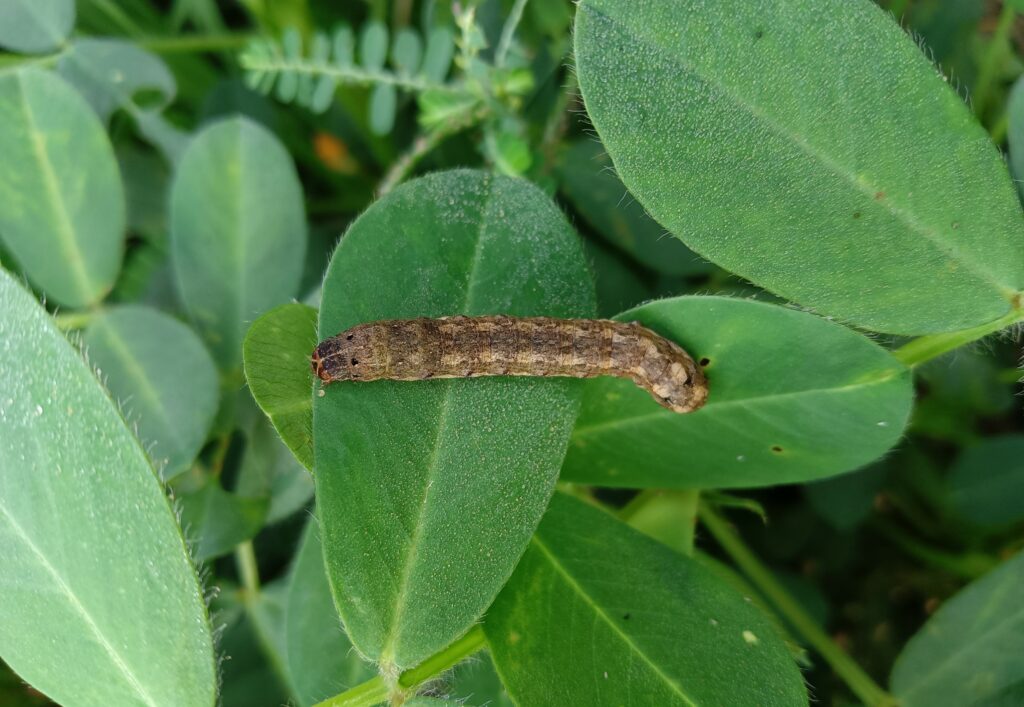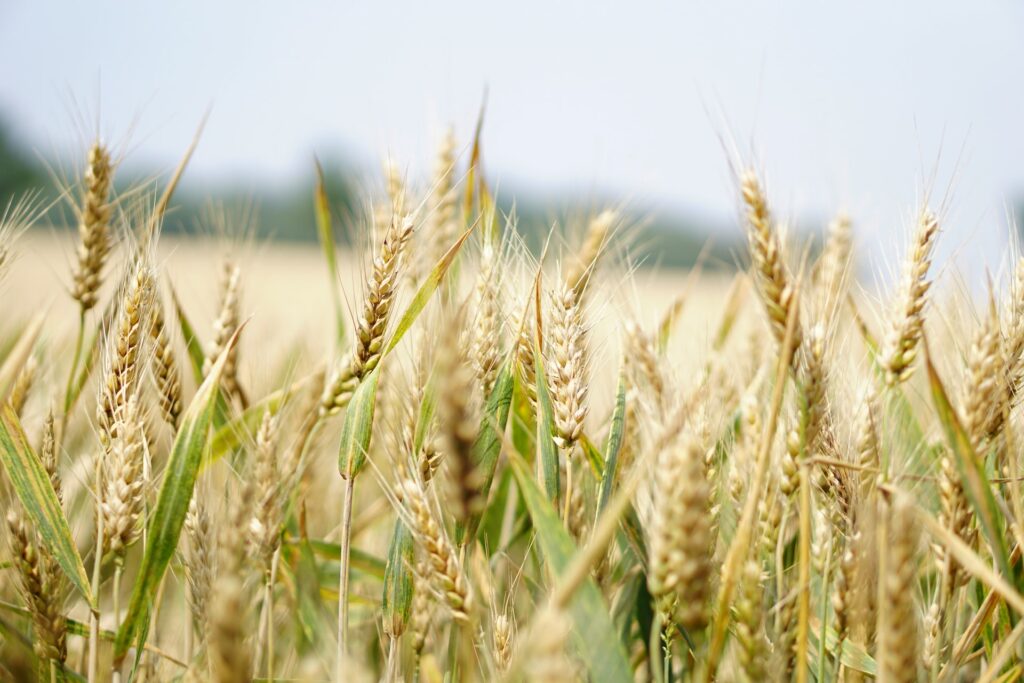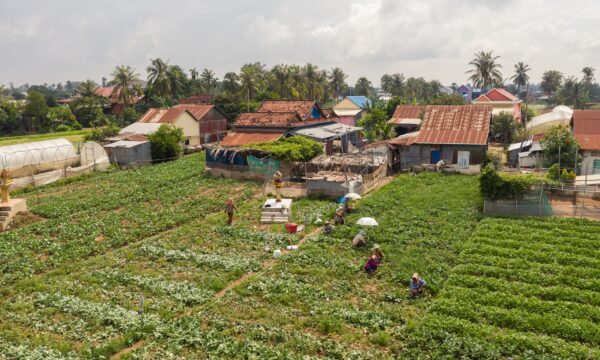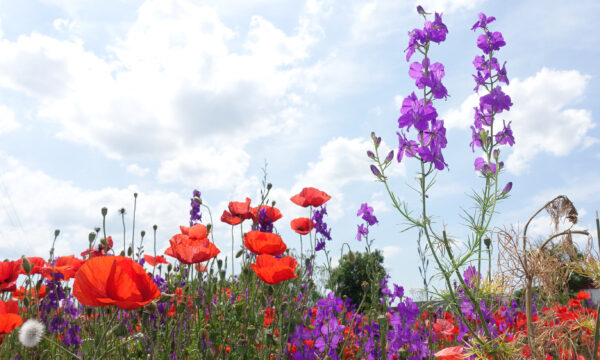The Taro caterpillar (Spodoptera litura), is a pest of many crops across Asia and Oceania. This species is generally well-controlled by natural enemies. Therefore, outbreaks in India’s Madhya Pradesh over the past two years are particularly notable.

Taro caterpillar as a crop pest
Spodoptera litura is a pest with a wide host range, found in Asia and Oceania. Commonly known by several names, which include Tobacco caterpillar or cutworm, Tropical or Taro armyworm or Taro caterpillar. The egg masses are cream-brown and laid in clusters on foliage. Whereas the caterpillars are pale brown with yellow-green dorsal stripes and white lateral bands. The moth is dark in colour, with white wavy markings on the forewings.
The Taro caterpillar is often confused with Spodoptera littoralis (Cotton leafworm). They have many similarities but were identified as separate species in the 1960s. The Cotton leafworm is found in Europe, the Middle East and Africa. Whereas the Taro caterpillar is found across Asia and Oceania. It is widespread in Bangladesh, India, Japan, Laos, Malaysia and Taiwan. And localised cases are found in Australia, China, New Zealand and Russia.
The Taro caterpillar is an important pest of cabbage, cauliflower, cowpea, peas, potato and tomato. However, it also affects many other crop species including coffee, cotton, maize and rice, as well as taro and tobacco.
Taro caterpillar outbreak in wheat crops in India
During the last two years, wheat crops in Madhya Pradesh, a large central state in India, have faced infestations of Taro caterpillars. However, this has been an issue on the rise for the past seven years.
Despite wheat being a hardy crop, Taro caterpillars in very large numbers can be lethal. The polyphagous pest causes the defoliation of leaves, leading to the stunted growth of crops. The caterpillars, also damage fruit, making it unfit for sale and consumption. In addition, some wheat varieties are more greatly affected than others. Scientists from the Central Integrated Pest Management Centres (CIPMCs) found Taro caterpillars affect the high-yielding durum wheat variety (HI 8759) ‘Pusa Tejas’ more than the hybrid Lok-1 variety.
Wheat sown in October has been particularly affected, according to the CIPMCs. When sown at this time, the lifecycles of the wheat coincide with that of the pest. Spodoptera litura causes the most harm as mature larvae (caterpillars) but stops damaging crops once they pupate. As of January 2023, the caterpillars in Madhya Pradesh were recorded to be moving into the pupa stage. However, this species seems to be becoming a recurring problem in the state.
Taro caterpillar management
Farmers in Madhya Pradesh have been using insecticides commonly used for lepidopteran pests to fight the outbreak. Both the CIPMCs and the ICAR-Indian Agricultural Research Institute have recommended the use of Quinalphos 25 EC 800 ml/ha or Emamectin Benzoate 12.5 g AI/ha for heavy infestations. ICAR-Indian Agricultural Research Institute has also recommended insecticides should only be applied if crop loss is more than 5-7%.
There are also several non-chemical management techniques for dealing with this particular pest. Rubbing eggs or larvae with a hand or a leaf, or removing and destroying the whole leaf can be very successful. Manual removal in combination with ‘warning’ pheromone traps can be particularly useful.
Another alternative to chemical pesticides is spraying aqueous extracts of chinaberry, Indian privet, Malabar nut or neem (at 200g per litre of water).
Biocontrol methods can also be useful for reducing the spread of pest species. The Taro caterpillar has many natural enemies. These include egg parasites like the wasp Telenomus nawai, and larval parasites like the wasp Apanteles marginiventris and the fly Peribaea obata as well as others. Species like the egg parasitoid Trichogramma chilonis can be released into crop fields weekly, in the case of severe infestation to reduce the pest population.
Deep ploughing can also help to expose the pupae in the soil to these natural enemies and the weather. And flooding of fields brings larvae to the surface, birds can then predate upon the larvae.

Changing farming practices
A key observation has highlighted one of the reasons for the recurring Taro caterpillar outbreaks in India. Farmers have become increasingly less likely to leave a gap between their Rabi crops (sown at the beginning of winter) and Kharif crops (sown in the monsoon season). This allows the eggs and larvae to survive and develop in the soil, and then move on to the next crop.
To prevent this, putting in a rest period of 15-20 days between the crops can prevent future outbreaks. The gap would expose the eggs and larvae to the weather and natural enemies, preventing them from moving on to the next season’s crop.
Further reading
If you would like to find more information on this subject, please see the links below:
‘Outbreak of Tobacco caterpillar on wheat in Madhya Pradesh’ – Local news article about the outbreak (Krishak Jagat).
‘Spodoptera litura (Taro caterpillar) – Technical Factsheet’ – Additional information about the Taro caterpillar (CABI).
‘Management of Tobacco caterpillar – Factsheet for Farmers’ – Further management advice (CABI).
1 Comment
Leave a Reply
Related News & Blogs
How do pest risk registers address the spread of plant pests in Africa?
Pest risk registers can help to solve problems in agriculture, addressing the growing global threat of plant pests. Moreover, changing weather patterns, led by rising temperatures, are causing them to reproduce faster and expand into new regions. In ad…
10 July 2025





Excellent article. Hugely informative.